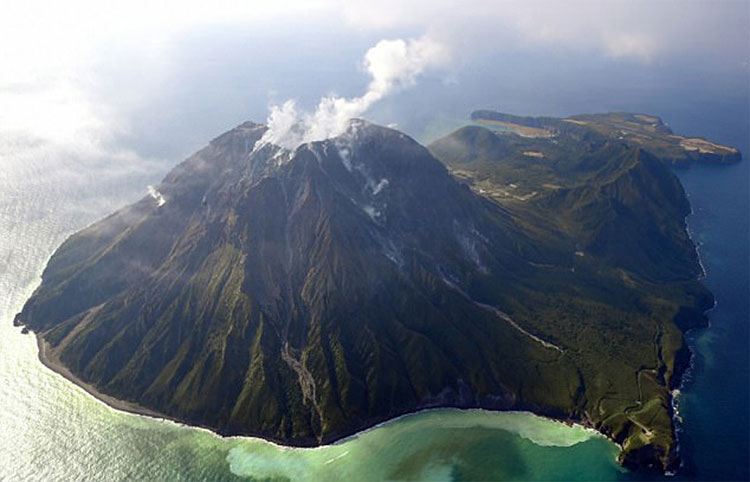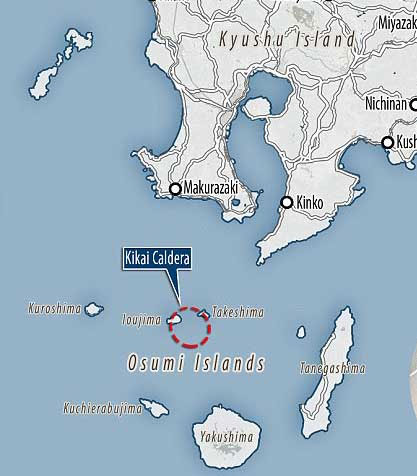Super volcano about to wake up, threatening 100 million people
The Japanese super volcano sleeping in the seabed 7,300 years ago may be about to wake up, threatening the lives of 100 million people.
According to Daily Mail, scientists found evidence that the huge amount of magma inside the Kikai volcano is about to erupt.

Japan is a country heavily influenced by volcanoes and earthquakes.
Scientists believe that this amount of magma is up to 32km and is increasingly tending to spray upwards.
Super volcanoes can completely erupt, and if that happens, 100 million people living in Japanese coastal areas are threatened.
The study was carried out by Kobe Center Ocean Exploration Center (KOBEC) scientists at Kobe University. This huge amount of magma formed since the last super eruption was 7,300 years ago.
The eruption is said to have wiped out the Jomon civilization in southern Japan.
If the super volcano erupts, it releases an atmosphere of a large amount of rock, dust, and light covering
Sunlight in some areas, forming the phenomenon of 'volcanic winter'.

Kikai volcano is located in the waters off the southern coast of Japan.
can also cause tsunamis in southern Japan, the coast of China before spreading to the North and South of the Americas.
Scientists hope they can use their latest research to ' prepare for the super-eruption in the future'.
Professor Yoshiyuki Tastsumi, head of the KOBEC center and research author of The Mainichi newspaper, said: 'Although the rate of super volcanic eruptions is only about 1% in the next 100 years, the number of people killed The worst situation can be up to 100 million people '.
Next month, the Japanese team is expected to use underwater diving robots to learn more about the super Kikai volcano.
Japan lies on four different tectonic layers, forming the region most affected by earthquakes in the world. Japanese islands are also located, which is a hotspot for volcanic activity in the past.
- Super Italy volcano is about to wake up, threatening half a million people
- 4 super volcanoes threaten humanity
- Video: Super American volcano can erupt earlier than expected
- Predict the wake of the super volcano Yellowstone
- Volcanoes can 'wake up' in 2012
- Water circuit in the United States unusually sprayed: Signs of super volcanoes waking up, killing many people?
- Super volcano on Mars
- Obsessed the world's most terrible volcanic disasters
- The disaster when the New Zealand volcano erupted
- Yellowstone volcano is dying?
- Giant super typhoon threatens 100 million Indians
- Decipher the mysterious eruption of the super volcano
 Is the magnetic North Pole shift dangerous to humanity?
Is the magnetic North Pole shift dangerous to humanity? Washington legalizes the recycling of human bodies into fertilizer
Washington legalizes the recycling of human bodies into fertilizer Lightning stone - the mysterious guest
Lightning stone - the mysterious guest Stunned by the mysterious sunset, strange appearance
Stunned by the mysterious sunset, strange appearance